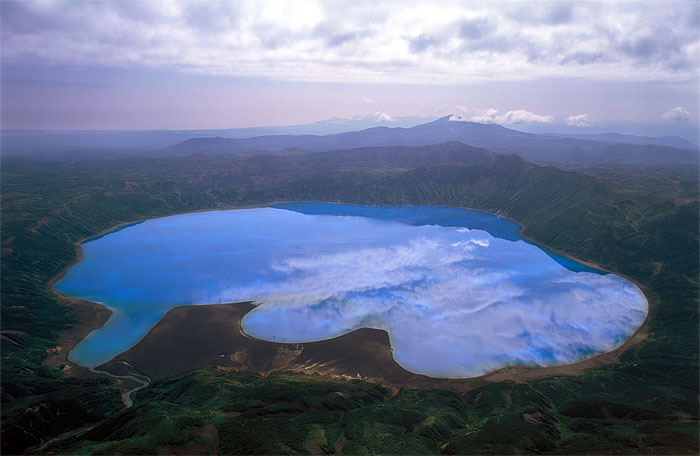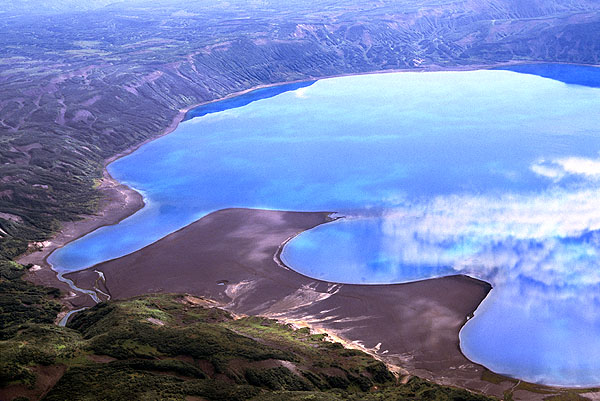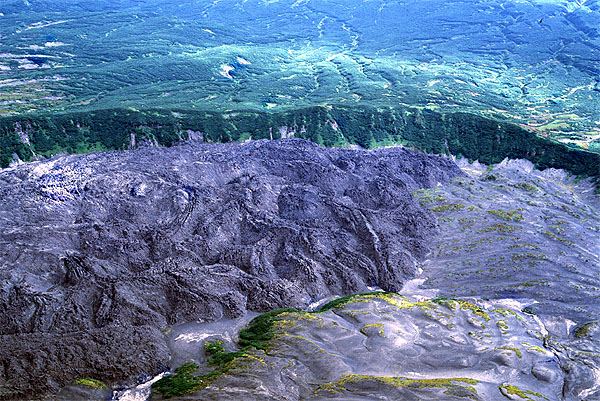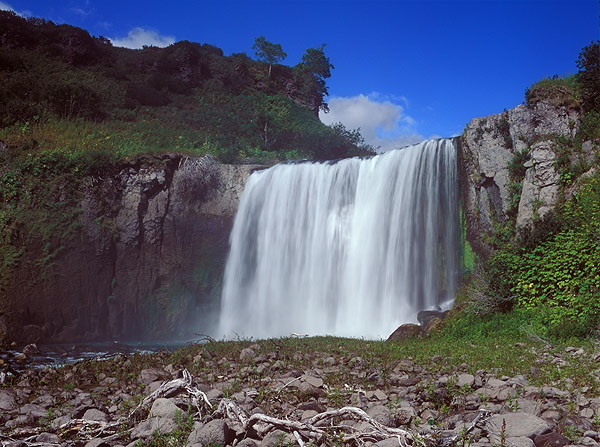Around Karymsky volcano
The caldera of the Academy of Science has been formed directly south of the Karymsky cone at a time when the Karymsky volcano still did not exist. Karymsky is very young and probably the most active volcano on Kamchatka in recent time. The blue color of the lake is caused by volcanic activity. Small ash particles from the last eruption and sulfur, injected by hot fumarolic gases, scatter the light in the same way fine ground rock particles do in many glacier lakes. Before the eruption it had been a "normal" lake.

In January 1996 an eruption suddenly started inside the lake, the remaining crater with its round shape is still visible in the picture. The eruption began with a medium sized phreatomagmatic eruption from this new crater and, a few days later, shifted over to the summit crater of Karymsky. Some experts count the "Academy of Science" as the 30th active volcano on Kamchatka, others believe that both volcanoes are part of one volcanic system.

This picture shows part of the volcano's caldera and andesitic lava flows, which went down the slopes some hundred years ago.

The third waterfall of the Karymsky River, which flows out of the caldera. Waterfalls in volcanic regions are often formed by old lava layers and different erosion rates between the surrounding ash layers and the hard lava.

HOME